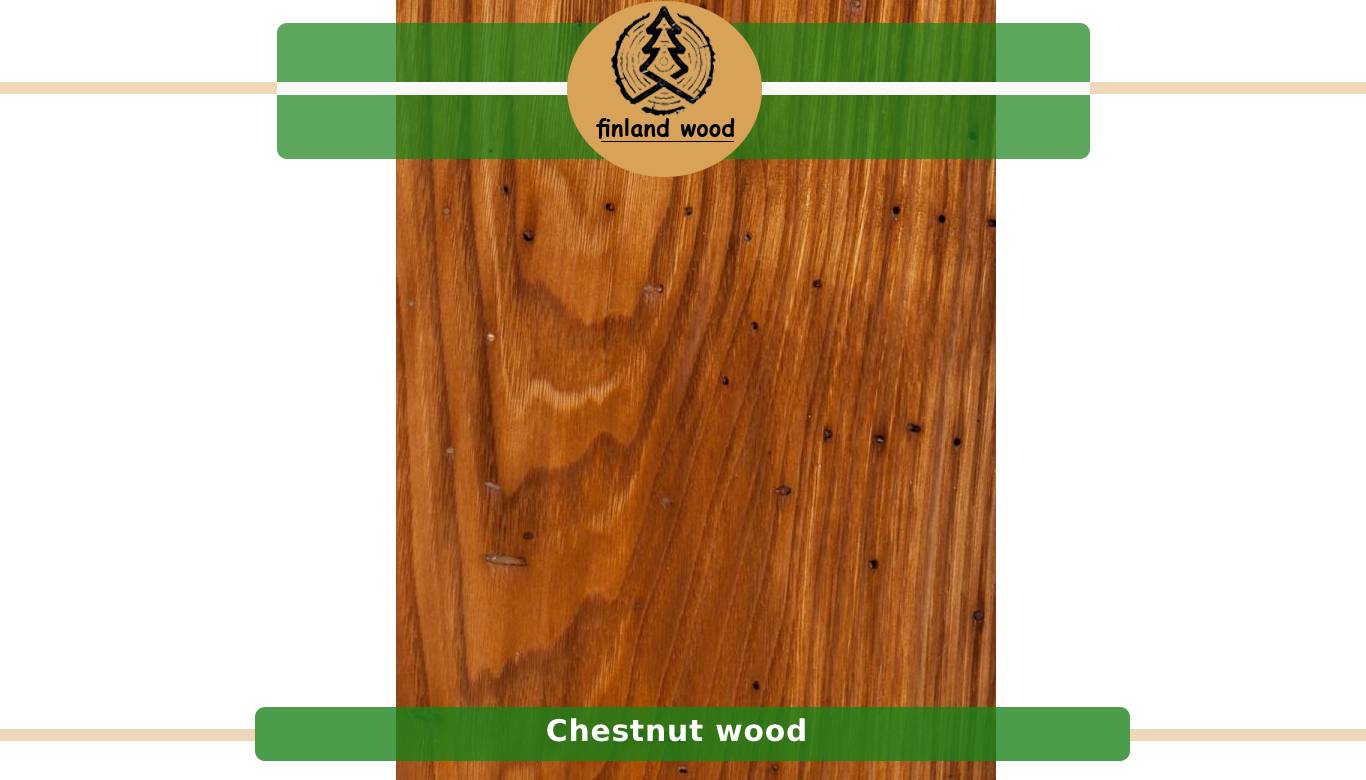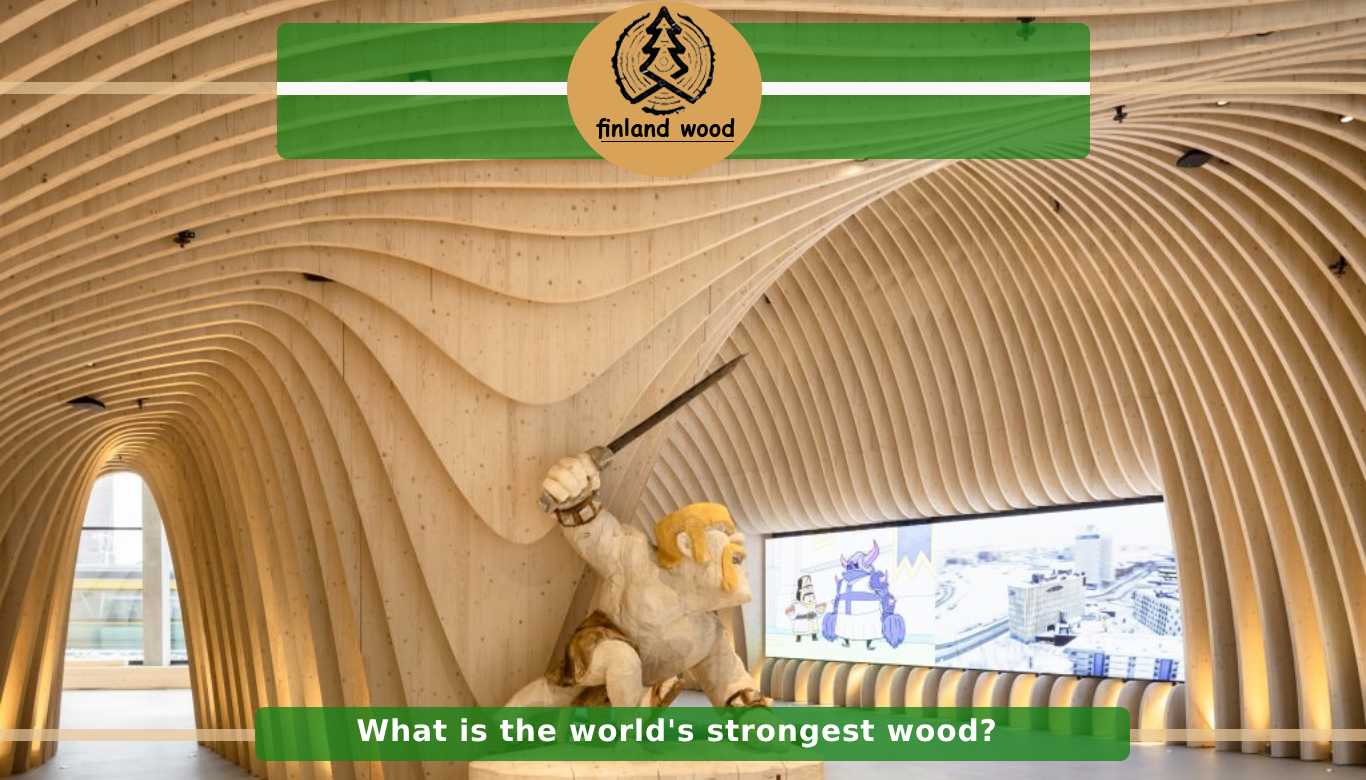Chestnut wood is a type of wood that is derived from the chestnut tree, which is native to the Northern Hemisphere. Chestnut wood is a durable and strong wood that is known for its resistance to decay and insect damage. It has a straight grain and a coarse, porous texture, which gives it a unique and rustic appearance.
Chestnut wood has been traditionally used for a variety of applications, including furniture, flooring, and fencing. In Europe, chestnut wood was commonly used for the construction of buildings and bridges due to its strength and durability.
In addition to its practical uses, chestnut wood is also valued for its aesthetic qualities. It has a warm, rich color that ranges from light brown to dark reddish-brown, and its distinctive grain pattern makes it a popular choice for decorative woodworking projects.
However, chestnut wood has become increasingly rare in recent years due to a blight that has devastated chestnut trees in many parts of the world. As a result, it is now a more expensive and sought-after wood for woodworking projects.
chestnut tree
The chestnut tree is a large, deciduous tree that belongs to the beech family, Fagaceae. It is native to the temperate regions of the Northern Hemisphere, including North America, Europe, and Asia. The chestnut tree can grow up to 30 meters in height and can live for several hundred years.
The tree has a straight trunk with a thick, deeply furrowed bark. Its leaves are oblong in shape and have a toothed margin. The chestnut tree is monoecious, which means that it has separate male and female flowers on the same tree. The male flowers are long and yellowish-white, while the female flowers are shorter and greenish-yellow.
Chestnut trees produce a nut known as a chestnut, which is edible and has been used as a food source for thousands of years. The nuts are enclosed in a spiny burr, which splits open when ripe to reveal the nut inside. Chestnuts are a nutritious food that can be eaten roasted, boiled, or ground into flour.
However, chestnut trees have been severely impacted by a fungal disease called chestnut blight, which was introduced to North America in the early 20th century. This disease has devastated chestnut tree populations in North America, and has also had a significant impact on European and Asian chestnut trees. Efforts are underway to develop resistant strains of chestnut trees that can withstand the disease.
Benefits of Chestnut wood
Chestnut wood has a number of benefits, including:
Durability: Chestnut wood is known for its durability and resistance to decay and insect damage. This makes it a popular choice for outdoor applications such as decking, fencing, and outdoor furniture.
Strength: Chestnut wood is a strong and sturdy wood, which makes it suitable for a variety of structural applications. It has been traditionally used for building construction, bridges, and shipbuilding.
Aesthetic appeal: Chestnut wood has a warm, rich color and a distinctive grain pattern that make it a popular choice for decorative woodworking projects. It is often used for furniture, flooring, and paneling.
Sustainable: Chestnut wood is a sustainable choice for woodworkers, as it is a renewable resource that can be harvested without harming the environment. Chestnut trees also have a low impact on the soil and require fewer pesticides and fertilizers than other types of trees.
Easy to work with: Chestnut wood is easy to work with using hand and power tools, and it takes stains and finishes well. It also has good bending and shaping properties, making it a versatile wood for woodworking projects.
Overall, chestnut wood is a versatile and durable wood that offers both practical and aesthetic benefits for a wide range of woodworking applications.
Disadvantages of Chestnut wood
While chestnut wood has many benefits, there are also some potential disadvantages to consider:
Cost: Chestnut wood is becoming increasingly rare due to the impact of the chestnut blight disease, and as a result, it can be more expensive than other types of wood.
Availability: The availability of chestnut wood can vary depending on the region and the extent of the chestnut blight disease. In some areas, it may be difficult to find large, high-quality pieces of chestnut wood.
Brittle: While chestnut wood is strong, it can also be brittle, especially when it is old or has been exposed to extreme weather conditions. This can make it more prone to cracking or splitting.
Weight: Chestnut wood is a dense and heavy wood, which can make it more difficult to work with and transport.
Allergies: Some people may be allergic to chestnut wood dust or the oils in the wood, which can cause respiratory irritation or skin reactions.
Overall, while chestnut wood has many benefits, it may not be the best choice for every project or situation, and it is important to carefully consider its potential disadvantages before selecting it for a woodworking project.
Application of Chestnut wood
Chestnut wood has a wide range of applications, including:
Furniture: Chestnut wood is a popular choice for furniture, particularly for rustic or traditional styles. It can be used for tables, chairs, cabinets, and other pieces.
Flooring: Chestnut wood flooring is a popular option for homes and other buildings, particularly for those with a rustic or traditional style.
Fencing: Chestnut wood is a popular choice for fencing due to its strength and durability. It can be used for traditional split-rail fences, as well as more modern designs.
Outdoor structures: Chestnut wood is a good choice for outdoor structures such as decks, pergolas, and gazebos, due to its durability and resistance to decay and insect damage.
Paneling: Chestnut wood paneling can be used for walls, ceilings, and other interior surfaces, providing a warm and rustic look.
Carving: Chestnut wood is a popular choice for carving, due to its strength and ease of working with hand and power tools. It can be used for decorative pieces, as well as functional items like utensils.
Overall, chestnut wood’s strength, durability, and unique appearance make it a versatile choice for a wide range of woodworking applications.
chestnut wood color
Chestnut wood typically has a light to medium brown color with a warm, reddish tint. The heartwood (the darker wood near the center of the tree) is usually darker than the sapwood (the lighter wood near the outer part of the tree). The grain pattern of chestnut wood is typically straight, with occasional waves or knots that can add character and interest to the wood’s appearance. Over time, chestnut wood may darken slightly due to exposure to light and air. The wood can also be stained or finished to enhance or alter its natural color.
chestnut wood for burning
Chestnut wood can be used for burning, but it is not considered to be the best firewood option. It has a moderate heat output and a tendency to spark and pop, which can be a safety hazard. It also produces a fair amount of smoke and has a tendency to build up creosote in chimneys, which can increase the risk of chimney fires.
If you do choose to use chestnut wood for burning, it is important to properly season the wood to reduce its moisture content and improve its burning characteristics. This involves allowing the wood to dry for at least 6-12 months in a dry and well-ventilated area before using it for burning.
Overall, while chestnut wood can be used for burning, there are better options available, such as oak, maple, or hickory, which produce a higher heat output and less smoke and spark.
chestnut wood wand
Chestnut wood can be a good choice for a wand due to its durability and versatility. It has a straight grain that can be easily carved and shaped into a wand, and its warm reddish-brown color can add a unique and attractive appearance to the finished wand.
When selecting a piece of chestnut wood for a wand, it is important to choose a straight, knot-free piece of wood with a consistent diameter. The wood should also be properly dried and seasoned to reduce the risk of warping or cracking over time.
In terms of magical properties, chestnut wood is associated with protection, healing, and prosperity. It is said to have a grounding and stabilizing energy, and is often used in spells related to financial success, fertility, and growth. As with all magical tools, the specific properties and uses of a chestnut wood wand may vary depending on the practitioner and their individual beliefs and practices.
chestnut wood vs oak
Chestnut wood and oak are both popular choices for woodworking projects and have their own unique characteristics.
In terms of hardness and durability, oak is generally considered to be harder and more durable than chestnut wood. Oak has a high density, which makes it resistant to wear and tear and better able to withstand heavy use. Chestnut wood, while still a strong and durable wood, is generally less dense and can be more prone to splitting or cracking over time.
In terms of appearance, both chestnut wood and oak have distinctive grain patterns and warm, rich colors. Chestnut wood typically has a lighter, reddish-brown color, while oak has a darker, yellowish-brown color. Chestnut wood also has a more straight and uniform grain pattern, while oak can have a more varied and pronounced grain pattern with distinctive rays and flecks.
Overall, both chestnut wood and oak are excellent choices for woodworking projects, and the choice between them will depend on the specific project and the preferences of the woodworker. Oak is often preferred for applications where durability and strength are a top priority, such as flooring, furniture, and cabinetry. Chestnut wood, on the other hand, is a popular choice for rustic or traditional styles, and is often used for applications such as fencing, paneling, and decorative carvings.
Is chestnut an expensive wood?
The cost of chestnut wood can vary depending on a number of factors, including the location and availability of the wood, the quality of the wood, and the demand for it in the market. In general, chestnut wood is considered to be a moderately priced wood, although it can be more expensive than some other common woods, such as pine or poplar.
One reason for the moderate cost of chestnut wood is its availability. Chestnut trees were once plentiful in North America and Europe, but were decimated by a blight in the early 1900s, which drastically reduced the number of mature chestnut trees available for lumber. As a result, chestnut wood is now considered to be a rare and valuable wood, particularly for its unique appearance and historical significance.
Despite its rarity, chestnut wood can still be found in specialty lumber yards and woodworking suppliers, and is often priced similarly to other hardwoods such as oak or maple. The cost of chestnut wood may also be influenced by its condition and quality, with higher-grade, well-maintained wood commanding a higher price than lower-grade or less well-maintained wood.
Is chestnut stronger than oak?
Oak is generally considered to be stronger and more durable than chestnut wood. This is because oak is a denser and heavier wood than chestnut, with a tighter and more uniform grain structure. Oak also has a higher resistance to wear, tear, and damage from insects and rot, making it a popular choice for high-traffic areas such as flooring, furniture, and exterior construction.
Chestnut wood, while still a strong and durable wood, is generally less dense and can be more prone to splitting or cracking over time. It also has a tendency to rot more quickly than oak when exposed to moisture, which can limit its usefulness in outdoor applications.
That being said, both oak and chestnut wood have their own unique properties and advantages, and the choice between them will depend on the specific application and the preferences of the woodworker or builder. Chestnut wood, for example, may be preferred for its warm and attractive appearance, its historical significance, or its availability in certain regions. Ultimately, the strength and durability of any type of wood will depend on a variety of factors, including the quality of the wood, the conditions under which it is used, and the specific stresses and strains to which it is subjected.
Is chestnut a rare wood?
Chestnut wood is considered rare today because of the near extinction of the American Chestnut tree due to a disease called chestnut blight. The American Chestnut tree was once one of the most common and important trees in the eastern United States, but it was almost entirely wiped out in the early 20th century. As a result, chestnut wood is now relatively scarce, and any pieces of furniture or other items made from chestnut wood can be considered valuable and sought-after. However, it’s worth noting that there are other types of chestnut trees in different parts of the world that are still relatively abundant and are used for their wood.







